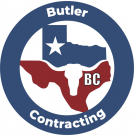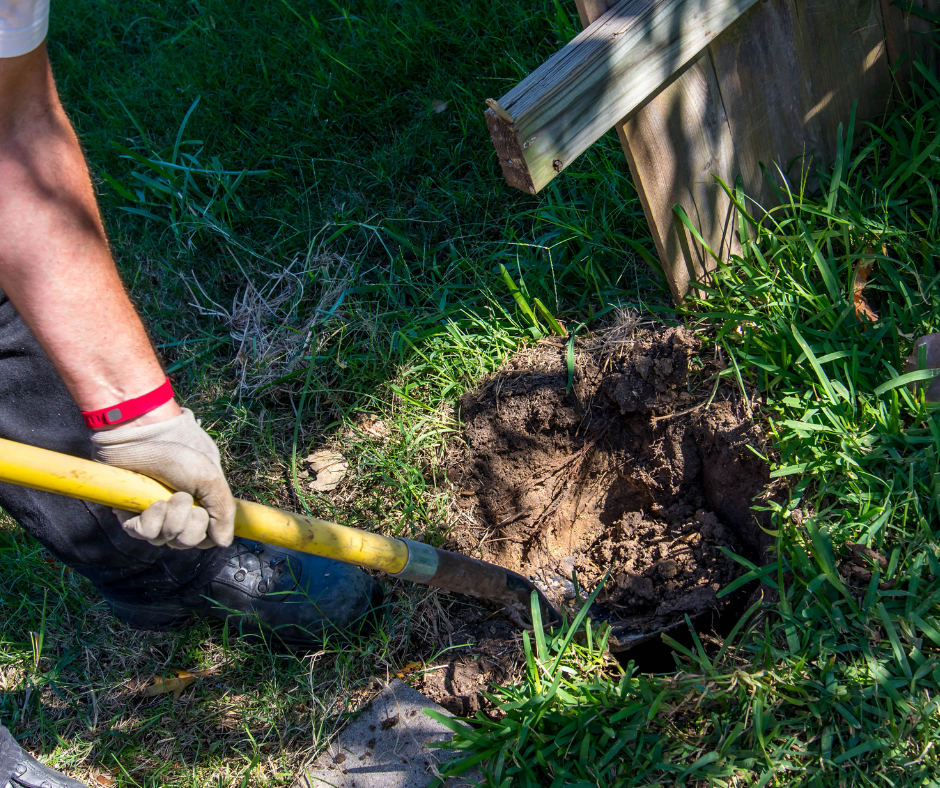Whether you’re planning on building a pool, installing a fence, or a septic system on your property, it’s going to require some digging. Texas has what is referred to as the “One-Call Law” that requires homeowners to give notice two business days in advance (not counting holidays and weekends) before breaking ground on a project. If you’re going to dig a posthole, trench, or any other kind of minor excavation that is 16 inches or deeper into the ground, be sure to call 811 so that you can be in compliance with the law and dig safely. If you’re hiring a contractor to do the digging, it’s their responsibility to make that call, and one of the things you should look for when hiring a contractor.
How to avoid damaging utility lines when digging
When you call 811 to propose a digging project, you can request that any utilities underneath the ground at the proposed digging location be marked with flags in the approximate location of those utility lines. You have another option besides making the phone call: you can submit a request digitally through an online portal on Texas 811’s website.
Having the location of the utility lines marked is simply the beginning of safety since the flags only mark an approximation of where to avoid digging. There’s no specified rule to follow in the Texas One-Call Law to keep you from digging into anything dangerous. However, there is an industry-accepted guideline of digging no closer than 18 inches on either side of the marked line. It’s still up to you to proceed with caution and dig safely – even regular shovels and hand tools can and do cause damage to gas lines.
APWA underground utility color code
The American Public Works Association has established a color code that helps you identify what kinds of lines run underground by the colors of the flags the utility companies mark your property with.
White – Proposed Excavation (often a white paint line)
Pink – Temporary Survey Markings
Green – Sewer and Drain Lines
Blue – Potable Water
Red – Electrical Power Lines, Cables, conduit, and Lighting Cables
Yellow – Gas, Oil, Steam, Petroleum, or Gaseous Materials
Orange – Communications, Alarm or Signal Lines, Cables or Conduit
Purple – Irrigation and Slurry Lines, Reclaimed Water
It’s important to note that the Texas One-Call Law does not require water and sewer operators to participate in the Texas Notification System and they may need to be contacted directly.
Do I need to make any additional phone calls?
The excavator doing the digging is ultimately responsible for the job site and if the original markings are removed for any reason, another phone call can be made to re-mark the property to ensure safety through the entire digging process.
On the rare occasion that you make a request, wait the required time and the utility operator doesn’t show up to mark your lines, you may call again and request a second notice be sent. If after the second notice, there is still no response, you may proceed to dig with extreme caution until the lines are properly marked.
The standard wait time before you receive a response from a request ticket is two days, but because Texas is such a large state, the Texas Notification System receives over 2 million requests per year. Each request potentially notifies 10-12 different utilities and in addition to responding to legal requests, responding to emergency locates and illegal short-notice locates takes time away from scheduled work. Sometimes utility companies get behind depending on how many requests are received and how many people are following the law, so it may take longer than two days to get a response.
Consider Butler Contracting
If you need a fence installed, you can be sure that Butler Contracting will call 811 and get your utility lines marked to keep you and your neighborhood safe from digging into utility lines.



